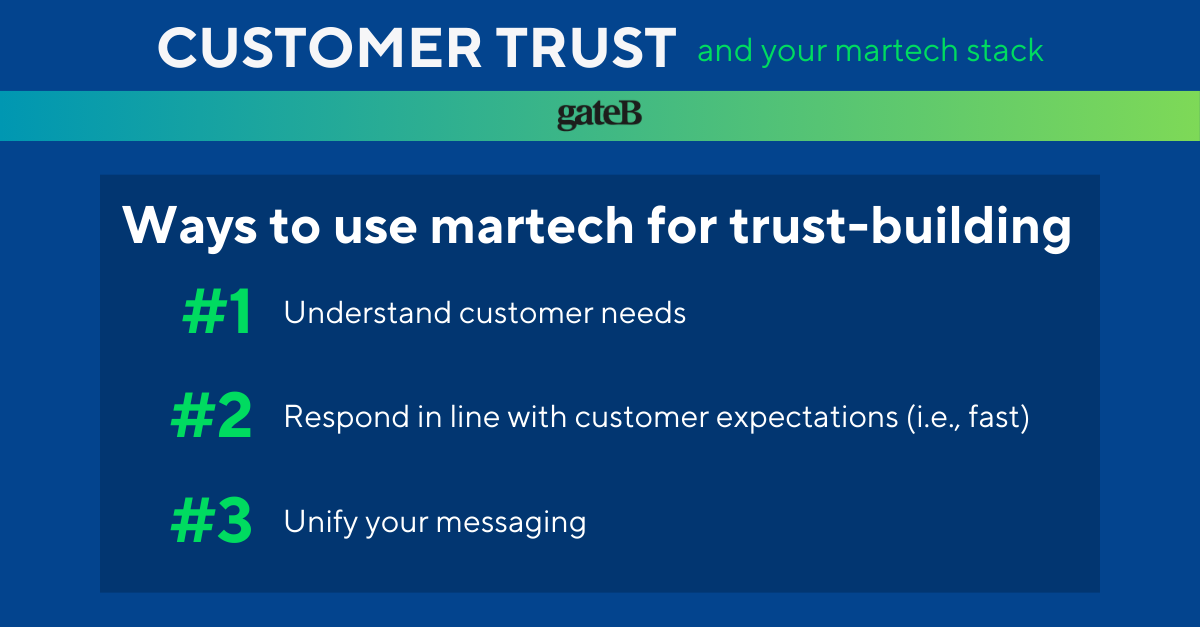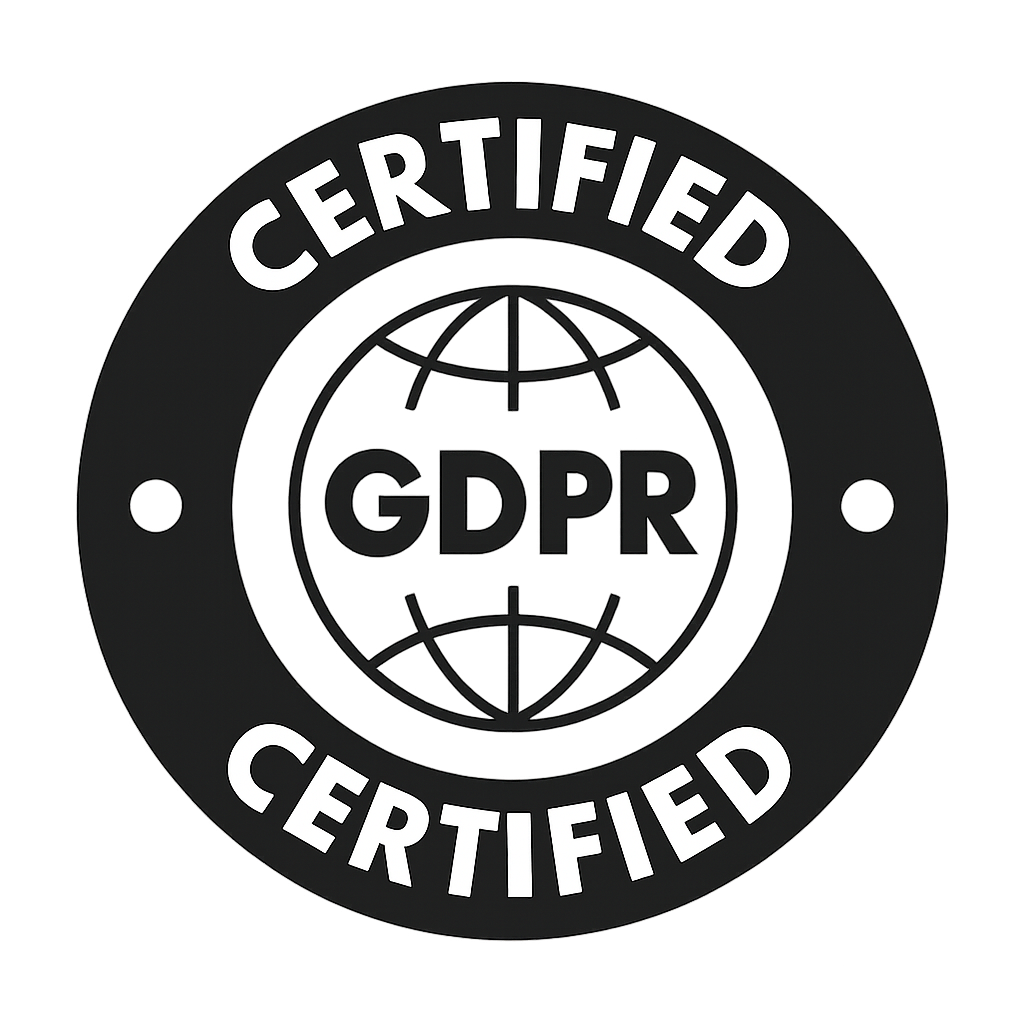†Source: Harvard Business Review Pulse Survey, Optimizing the Use of Marketing Technology to Build Customer Trust
The impact of customer trust
When your customers trust your brand, they view your product or service positively and are more likely to choose you over your competitors. They may even advocate for you within their network and beyond (e.g., through positive reviews). You generally have to spend less to retain customers who have a high level of trust with your brand.
Because building trust is probably a strategic objective at your company, it creates both an opportunity and a risk for marketing. Done well, marketing efforts help to keep the relationship warm, even fostering further confidence in the brand. Done poorly, marketing can destroy trust that’s taken years to build.
So, then, marketing teams have a task in front of them. How do you align your marketing efforts behind the company-wide objective of trust-building? Just as importantly, how do you tactically prove that your work is delivering increased trust?
In that same HBR survey, 81% of respondents said martech impacted their company’s ability to build trust. Used well, your stack can be a helpful tool you leverage.
#1: Understanding customer needs
When asked how, specifically, martech helps to foster trust, 42% of HBR Pulse Survey respondents gave the same answer: it enables the analysis of customer data to provide personalized experiences. 39% said it helped them tailor content to specific customer needs for greater relevance. In short, it enables customer listening.
We noted that customers expect full-scale personalization back in 2021, and we were by no means early to the game there. Today’s customers expect you to use the data they provide to tailor journeys to their wants and needs. In their minds, you’ve had plenty of time to adapt to this standard.
In fact, if you think about it from your own experience as a customer, you can probably validate this expectation. We’ve all all interacted with companies that have completely missed the mark in customer listening. That feeling probably left a lasting negative impression. You might have chosen to steer clear of that organization moving forward.
To avoid this pitfall, take steps to implement proactive customer listening. Your martech stack is absolutely critical here. If you have a good stack in place, it serves as a rich resource to get to know your customers. By using your stack to build personas and map customer journeys, you can get a much clearer picture of what people want from your brand — and when and how they want to access it.
#2: Responding in line with customer expectations (i.e., fast)
In the HBR Pulse Survey, respondents identified delays in responding to changing customer needs as the top threat to trust. As a Forbes article puts it, “Today’s customer has a need for speed.” The piece cites data saying that two-thirds of customers view speed as equally important to price, and more than half will hire the first company that responds to their request, regardless of cost.
In short, customers don’t want brands to waste their time. Doing so has direct negative impacts on customer trust. Fortunately, the opposite is also true. Being rapidly responsive can help you foster a stronger relationship.
Again, your martech stack is an asset here. For starters, it’s a critical tool that can streamline the creative process. This way, you have content ready to deploy when you need it. Additionally, a strong stack keeps content organized and accessible to be easily tapped as the situation calls for it.
After someone reaches out for more information, for example, you can automate responses to let customers know you have their request, and how long they’ll need to wait for a team member to contact them.
For ultra-quick responsiveness that doesn’t require a big lift from your team, deploy online chat powered by AI, with fast connection to a human when necessary. This way, the AI tool can field easier questions, getting customers the info they need faster. And the human-in-the-loop can ensure no trust is lost if the bot can’t satisfy the customer’s needs.
#3: Unifying your messaging
We hear from a lot of our clients that data silos are a huge problem. And we’re not alone. In the HBR Pulse Survey, 31% of respondents said that inconsistent messaging across channels was a major threat to customer trust. Another 27% noted siloed customer data as a problem here.
Research from the École Supérieure de Commerce de Paris (ESCP) Business School, one of the oldest business schools in the world, looked specifically at customer trust. It pointed out that trust develops in a multi-channel context: “In today’s multi-channel service environment, emotional and rational trust bonds are created with multiple ‘agents’ or touchpoints such as the front-line staff, the self-service technology (ATM, e-commerce, online account management), and an increasingly complex array of marketing communications.”
Your marketing stack can be a huge help here — provided you properly engineer your content operations and integrate the platforms used to activate them. Once you create channels for data and assets to flow across solutions, you can better serve your customer. You can see, for example, that you probably shouldn’t hit one customer with that marketing email when they just contacted your customer service line reporting a faulty product.
Breaking down silos goes a long way toward better serving your customers and, in turn, earning their trust. Plus, with integrated data, you’ll have an easier time creating business cases demonstrating how your marketing efforts impact trust levels.










